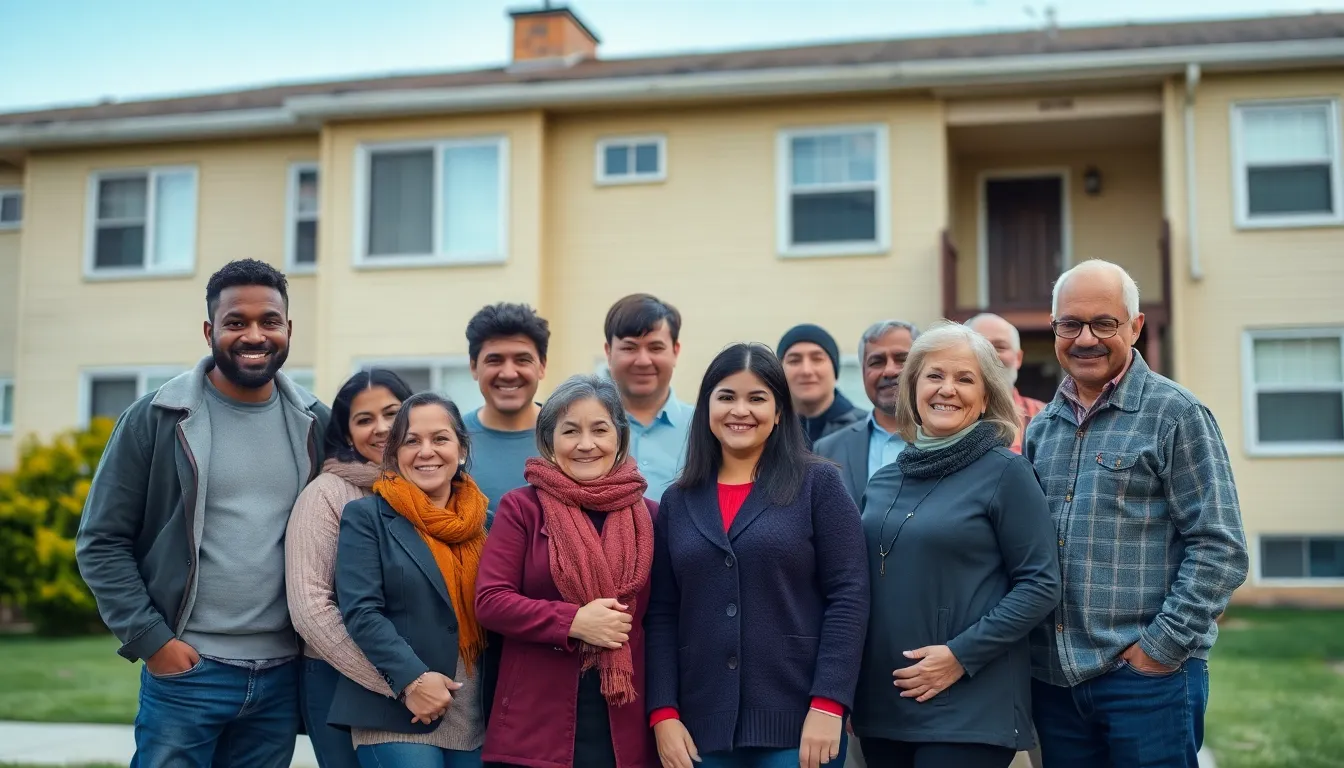In a world where rent seems to climb higher than a cat on a hot tin roof, understanding rent subsidy protections is more crucial than ever. These protections aren’t just a safety net; they’re the superhero cape for those grappling with housing costs. Imagine having a trusty sidekick that helps you navigate the often murky waters of rental agreements and government assistance—sounds pretty good, right?
Table of Contents
ToggleUnderstanding Rent Subsidy Protections
Rent subsidy protections serve as crucial tools for navigating the complexities of housing costs. Knowing these protections helps individuals secure affordable and stable housing options.
Definition and Purpose
Rent subsidy protections refer to programs designed to assist tenants with low incomes. These protections reduce the financial burden of rent through government funding or housing vouchers. Their primary purpose centers on ensuring housing stability and access to decent living conditions for vulnerable populations. Furthermore, they support landlords by promoting consistent rental income. As a result, these programs help maintain community stability and decrease homelessness rates.
Types of Rent Subsidy Protections
Several types of rent subsidy protections exist, each catering to different circumstances. Housing Choice Vouchers enable eligible tenants to pay reduced rent in the private market. Public Housing offers government-owned units at affordable rates. Project-Based Rental Assistance provides support tied directly to specific properties, ensuring that low-income families can afford their housing. Additionally, state and local programs often offer property tax exemptions or rental assistance programs to further aid struggling renters. Understanding these options allows individuals to make informed decisions about their housing needs.
Importance of Rent Subsidy Protections
Rent subsidy protections play a vital role in ensuring housing stability and security for many individuals and families. These protections significantly impact low-income households and contribute to a healthier economy.
Economic Stability for Low-Income Families
Economic stability for low-income families increases through rent subsidy protections. Programs like Housing Choice Vouchers allow families to allocate a portion of their income toward rent, easing their financial burden. Additionally, public housing provides affordable options that enable lower-income tenants to maintain their housing. Accessing these resources leads to reduced financial stress and improved quality of life. Families can now invest in education, health, and savings, further contributing to overall community well-being. Stabilized housing not only benefits individuals but also strengthens local economies by fostering consumer spending and community engagement.
Prevention of Homelessness
Prevention of homelessness directly correlates with the availability of rent subsidy protections. These programs aim to keep families housed during challenging financial periods. By providing monetary assistance, they help individuals avoid eviction and maintain stable living conditions. Local initiatives often target at-risk populations, ensuring vulnerable individuals receive timely assistance. Furthermore, the existence of these protections sends a clear message about the importance of housing as a right. Without them, many might face dire circumstances, leading to increased homelessness rates and social instability. Supporting rent subsidy protections ultimately creates a safer, more resilient community.
Challenges in Implementing Rent Subsidy Protections
Significant challenges exist in the implementation of rent subsidy protections, often hindering their effectiveness. Some primary issues include insufficient funding and administrative barriers.
Insufficient Funding
Limited financial resources impede the expansion and sustainability of rent subsidy programs. Agencies often rely on government budgets, which may not account for growing housing demands. In many regions, funding shortfalls directly reduce the availability of vouchers. Studies indicate that a mere 25 percent of eligible households secure assistance, leaving countless families without support. During economic downturns, intensified competition for resources makes funding allocation more difficult. Many jurisdictions struggle to maintain existing programs without further investment.
Administrative Barriers
Complex bureaucratic processes serve as major obstacles to accessing rent subsidy protections. Applicants often face lengthy approval timelines, discouraging many individuals from pursuing assistance. Miscommunication between agencies exacerbates confusion, leading to delays or denials of applications. In several areas, insufficient staffing creates backlogs, further hindering timely support. Information gaps regarding eligibility criteria also prevent potential beneficiaries from accessing resources. Navigating these barriers can feel overwhelming for vulnerable populations seeking aid.
Case Studies on Rent Subsidy Protections
Understanding the effectiveness of rent subsidy protections requires examining real-world examples. Successful programs demonstrate the potential benefits and effectiveness of these initiatives.
Successful Programs
New York City’s Advantage program serves as a prime example of success. It offered rental assistance combined with supportive services aimed at helping the homeless transition into housing. The program reported a 90 percent retention rate for participants after two years. Similarly, the Seattle Housing Authority’s Housing Choice Voucher program helps low-income families secure housing through financial assistance. It enables families to choose housing in various neighborhoods, fostering integration and stability. Programs in San Francisco and Chicago also showcase effective local partnerships that expand rental assistance resources and streamline access for applicants. These initiatives highlight the power of tailored solutions addressing unique community needs.
Lessons Learned from Failures
Examining failed rent subsidy protections reveals important lessons. The depletion of funding affected the impact of the Housing First model in Los Angeles. Inadequate resources resulted in the inability to house all eligible candidates, limiting its overall success. Complex application processes also hampered attempts to improve access to assistance in many states. Lengthy wait times and unclear guidelines deterred many from applying altogether. Florida’s rent subsidy mismanagement resulted in delays that left vulnerable populations without assistance during critical periods. Each failure underscores the significance of clear communication and reliable funding to ensure that at-risk communities receive the support they require.
Conclusion
Rent subsidy protections play a crucial role in safeguarding housing stability for low-income families. They not only alleviate financial burdens but also contribute to healthier communities by preventing homelessness. Understanding these programs is vital for individuals navigating the complexities of rental agreements and government assistance.
Despite the challenges in implementation such as funding shortages and bureaucratic hurdles, the positive impact of successful subsidy programs cannot be overstated. As communities advocate for improved access and support, the potential for these protections to enhance economic stability and social resilience continues to grow. Ultimately, fostering awareness and support for rent subsidy protections is essential for building a more equitable housing landscape.









